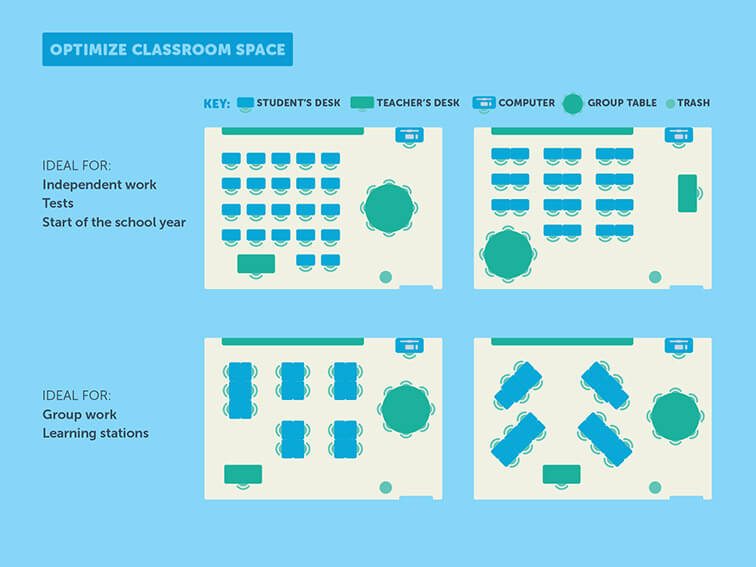
The Science Of Classroom Design (Graphic)
by TeachThought Staff
There is an art and science to teaching, and certainly to curriculum and assessment. And classroom management. And student engagement. And literally everything else about the craft of teaching. How is that true of classroom design? Good question.
See also
See also 4 Graphic Designs Apps For Students
In 20 Classroom Design That Promote Thinking, we said “Learning is an ecology. Classroom design impacts classroom management impacts curriculum needs impacts lesson and unit design impacts teacher personality impacts technology needs impacts literacy strategies and teaching strategies, and so on.”
In the following graphic, USC Rossier School of Education, they identified 5 categories:
- Layout
- Color
- Walls
- Light
- Digital Spaces
They then provided different ways to think about each category, along with best situations to use each (e.g., testing, collaborative work, etc.) And honestly, the tips aren’t half-bad. For the “Digital Spaces” category, they suggested eliminating extra words, images, and other modalities, adding visual cues, and using student-centered lessons.
You can give the full graphic a skim below. You could also offer your takeaways in the comments below that if you have anything you’d like to share with other teachers.
The Science Of Classroom Design (Graphic)

Brought to you by USC Rossier’s online Master of Arts in Teaching degree; The Science Of Classroom Design (Graphic)